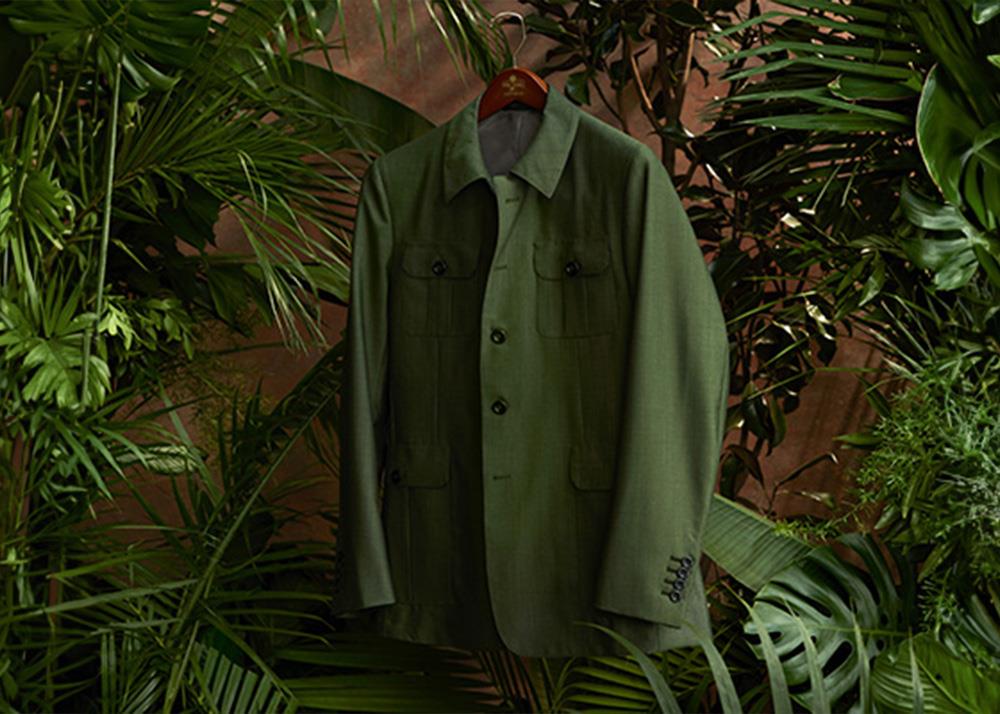Supporting Local Cape Town Sustainable Fashion for a Greener Future
Supporting Local Cape Town Sustainable Fashion for a Greener Future
Blog Article
Remain Ahead of the Contour by Discovering Ingenious Style Patterns
In an industry as vibrant as style, staying ahead involves greater than simply complying with present patterns-- it demands an expedition of development. Smart fabrics, for circumstances, are changing garments into functional masterpieces, while 3D printing is changing layout procedures with its adjustable, waste-reducing capacities. As sustainability ends up being a keystone, innovations like green products and circular fashion practices are improving environmental duty - Cape Town Sustainable Fashion. In addition, the merging of technology and fashion proclaims a new age of customer engagement. Just how, after that, can these arising fads redefine the future of style, and what effects do they hold for brands seeking to thrive in this evolving landscape?

Accepting Smart Textiles
In the last few years, the fashion market has actually observed a transformative shift with the integration of smart textiles, a cutting-edge technology that mixes innovation with material. This development stands for not just a combination of aesthetic appeals and performance but likewise a substantial jump towards sustainability and customization in fashion. Smart textiles, also called e-textiles, embed advanced electronics such as sensors and conductive strings within the textile, allowing garments to engage with the wearer or the atmosphere.
These textiles are made to keep track of physiological parameters, such as heart rate or body temperature, giving real-time health analytics. Past health and wellness applications, clever fabrics are likewise being utilized for adaptive clothing, which can change shade or pattern in action to ecological stimuli, therefore supplying a dynamic style experience.
Moreover, the advancement of energy-harvesting textiles that generate power from activity or sunshine is leading the method for self-sufficient wearable modern technology. This technology is interesting environmentally mindful consumers and developers aiming to lower the ecological impact of style. As r & d in this area advance, wise fabrics are anticipated to come to be progressively prevalent, improving the landscape of modern-day style with their multifunctional abilities.
The Increase of 3D Printing
Transforming the manufacturing landscape, 3D printing has actually become a game-changer in the fashion business. This advanced modern technology has actually made it possible for developers to press the boundaries of creative thinking, producing complex and customized garments that were previously inconceivable. By leveraging digital layout and additive manufacturing, 3D printing facilitates the development of intricate geometries and patterns, allowing developers to try out new textures and frameworks.
A notable advantage of 3D printing in vogue is its capacity to generate on-demand, lessening waste and decreasing supply needs. This effectiveness not only maximizes manufacturing procedures but also permits for fast prototyping, allowing developers to bring their visions to life in a much shorter timeframe. In addition, 3D printing supports personalization to a degree unparalleled by standard techniques, supplying distinct styles and individualized fits tailored to private customer preferences.
The increase of 3D printing has also democratized fashion, making it obtainable to arising designers who can currently produce premium items without significant economic investment in conventional manufacturing infrastructure. As modern technology remains to advancement, the fashion market is positioned to harness the complete possibility of 3D printing, checking out brand-new products and techniques that will undoubtedly redefine how fashion is developed and produced.
Sustainable Fashion Innovations
As the fashion business comes to grips with journalism demand for environmental duty, sustainable style technologies have emerged at the leading edge of transformative modification. The expanding understanding of ecological influence has sustained a shift in the direction of more eco-conscious techniques and materials. Developers and brand names are currently prioritizing sustainability, incorporating techniques that lessen waste and minimize carbon impacts.
One significant advancement is the surge of round style, which highlights recycling and upcycling to prolong the lifecycle of garments. This approach not just minimizes waste but also motivates customers to take on a much more conscious method to apparel consumption.
An additional breakthrough lies in the fostering of innovative dyeing methods that utilize natural dyes or waterless procedures, therefore lowering the large amounts of go to the website water and chemicals typically used in textile dyeing. Moreover, improvements in biotechnology have resulted in the creation of lab-grown natural leather and textiles, supplying cruelty-free and eco friendly options to standard products. With these pioneering initiatives, the apparel industry is making purposeful strides in the direction of a much more lasting future.

Tech-Integrated Garments
Tech-integrated apparel represents a revolutionary fusion of fashion and technology, improving how people interact with their clothing. This cutting-edge domain is noted by the incorporation of wise fabrics and ingrained digital parts, enhancing both functionality and visual appeal. From physical fitness trackers installed in sportswear to heated jackets regulated via smartphone apps, tech-integrated clothing offers consumers extraordinary benefit and versatility.
Introducing brands are driving this fad, concentrating on producing garments that react to ecological stimulations or customer commands. For example, some garments can transform shade or pattern in reaction to temperature shifts, while others integrate biometric sensors to keep track of wellness metrics like heart rate or tension degrees. The seamless combination of modern technology right into textiles also reaches environmental sustainability, with initiatives to establish self-cleaning fabrics or garments that get used to weather problems, hence minimizing the demand for multiple layers.
Moreover, the advent of wearable innovation is not just restricted to garments however prolongs to accessories like watches and eyeglasses, further broadening the range of tech-integrated fashion. As the sector remains to introduce, the capacity for modification and personalization in apparel expands, providing consumers unique, tech-enhanced fashion experiences that satisfy their specific needs and choices.
Future of Virtual Fashion
In recent times, the future of digital style has actually become a transformative pressure within the sector, leveraging innovations in digital technology to redefine exactly how style is developed, experienced, and taken in. By integrating increased reality (AR), online fact (VR), and 3D layout important link tools, designers can currently craft interactive and immersive experiences that transcend standard fashion borders. Virtual style enables the development of garments that exist entirely in digital atmospheres, supplying countless possibilities for technology without the constraints of physical manufacturing.
This electronic shift not only offers opportunities for imaginative expression yet also addresses sustainability worries integral in standard style practices. Cape Town Sustainable Fashion. By getting rid of the requirement for physical resources, digital fashion lowers waste and lessens carbon impacts. Furthermore, the rise of digital style lines up with the increasing consumer need for one-of-a-kind and customized experiences, as digital garments can be personalized and tailored to specific choices with ease

Final Thought
The garment industry's future hinge on the combination of sustainable techniques and innovative modern technologies - Cape Town Sustainable Fashion. Smart textiles and tech-integrated garments are enhancing performance, while 3D printing offers possibilities for customization and waste decrease. Sustainable style, with environmentally friendly products and circular methods, shows a commitment to ecological stewardship. Moreover, digital fashion is positioned to redefine customer interactions. Adapting to these patterns is essential for brands looking for to stay competitive and appropriate in this swiftly progressing landscape.
In recent years, the style sector has actually witnessed a transformative shift with the integration of clever fabrics, an advanced advancement that mixes innovation with fabric.As the fashion industry grapples with the pressing need for environmental responsibility, sustainable style innovations have arised at the forefront of transformative change.In recent years, the future of virtual style has arised as a transformative force within the market, leveraging improvements in electronic see here innovation to redefine exactly how fashion is created, experienced, and consumed. The increase of online style lines up with the boosting consumer demand for tailored and one-of-a-kind experiences, as digital garments can be tailored and tailored to individual choices with convenience.
The style market's future lies in the assimilation of cutting-edge innovations and sustainable practices.
Report this page